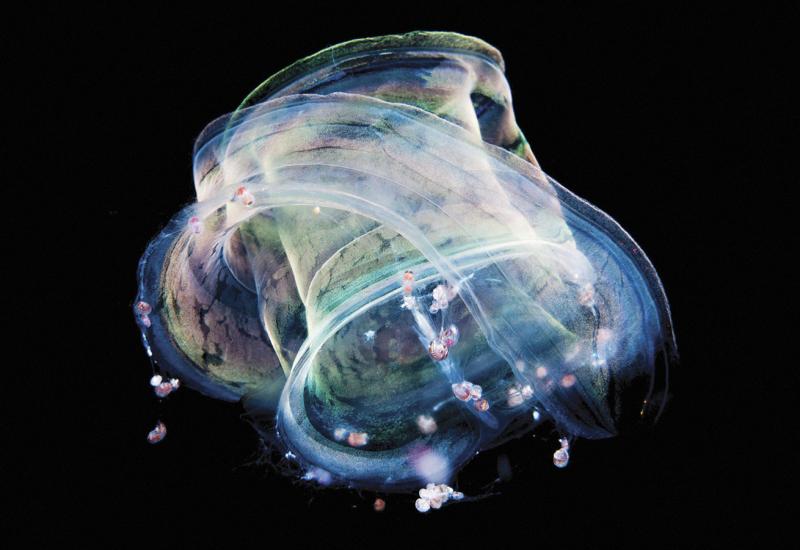How to Take Great Kelp Photos

Alex MustardKelp forests are packed with life; focus on colorful species and use the forest as a backdrop.
Diving seemingly frees us from gravity. We soar and hover, exploring in all directions. No environment allows us to exploit the third dimension like kelp—but it's not always an easy place to shoot. It’s an environment that rewards photographers who understand the challenges—and refine their techniques.
Tip 1: Shady Glades
Supersize seaweeds flourish in the shallows of many temperate seas. Macrocystis, or giant kelp, thrives in cool, nutrient rich waters, including southern New Zealand, South Africa, the Falklands and other sub-Antarctic islands, Argentina and Peru, and most famously on the Pacific coast of North America. For photographers, it reaches its zenith in California’s Channel Islands.
Kelp forests are not blessed with crystal viz. Offshore locations are usually much clearer than coastal sites, but in all locations, follow the variations and make the most of optimal conditions.
Giant kelp is one of the fastest-growing species in the world, increasing by up to 2 feet a day and reaching over 150 feet in length. This expansion is fueled by hundreds of leaflike blades that soak up sunlight. The light-sucking canopy and limited visibility mean that kelp dives are much darker than sunny California skies suggest. Your first camera adjustment should be ISO, to ensure you have plenty of light to work with. The amount of light is variable, and you can use higher ISOs—almost every modern camera produces excellent images over a wide range of sensitivities.
The rapid drop-off of light from the surface can be more than the camera can cope with; careless compositions can blow out the surface, making the top of the frame a bright-white explosion. One solution is to shoot with the light at your back, which reduces the range you’re asking the camera to capture. Alternatively, look for areas with a thick surface mat to hide the bright spot, so you can expose for midwater and beams. Kelp forests calm the water; the smooth surface focuses the sun into sharp rays that look particularly attractive in these shots as they penetrate the golden backlit canopy.
Kelp is challenging to light with strobes because it both absorbs light and is translucent. If you try to turn up your strobes to compensate, the kelp usually remains dark and the backscatter just gets brighter. Kelp looks best lit by the sun, either shot as a silhouette or with its yellow-brown color picked out against the blue.
Despite their size, individual plants are not supported by bulky trunks; they are instead suspended by air trapped in the kelp’s bladders. The growing tips of kelp are golden and hauled upwards by neat bunches of bladders. These are one of the few areas that take strobe light well, and work as a wide-angle foreground and a macro detail.
Since kelp grows upward, the most dramatic images are usually vertical. Fisheye lenses are particularly well suited to the forest, opening up views and allowing us to shoot wide from as close as possible. Their downside is distortion, which bends the kelp. Fortunately for us, kelp sways naturally, so as long as we compose carefully this downside is rarely critical. If bendy kelp is a concern, go with an ultra-wide rectilinear lens.
Tip 2: Best Supporting Actor
The strongest kelp photos rarely have kelp as the main subject—instead, use the forest to fill negative space. Close-focus wide-angle, or CFWA, is the ideal technique because the short camera-to-subject distance minimizes backscatter while allowing the background to communicate the grandeur of the habitat. Fortunately, marine life flourishes here—Charles Darwin exuberantly remarked that “the number of living creatures whose existence intimately depends on the kelp is wonderful.”

Alex MustardA harbor seal is a sought- after subject to frame against this special habitat.
Kelp forest backgrounds will usually be greens and blues, so search for foreground marine life in a contrasting warm hue. The trick to getting the forest to stand out is to properly expose this background; if underexposed at all, the kelp will just blend into the water. Ideal foreground subjects include red or golden sea fans, purple urchins and red starfish.
On the fish front, the state fish of California—the bright orange garibaldi, a super-sized glow-in-the-gloom damselfish—is certainly the star attraction. If these aren’t around, the California sheephead is a capable understudy. Many kelp forest fish are curious and easy to include in compositions if you keep your eyes open and time your shots for when they swim into position.
Sea lions and seals top most photographer wish lists. The former provide frequent but unpredictable, gone-in-a-flash encounters, while harbor seals are less energetic, and much rarer treats. When picked out with flash, both are the perfect subject to set against this enchanted forest.










